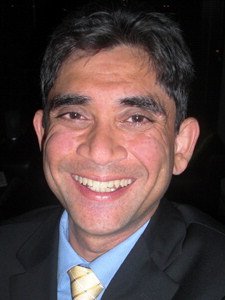University names top St. Jude Medical inventor as Medical Devices Center Innovation Fellows Program director

Contacts:
Rhonda Zurn, College of Science and Engineering, rzurn@umn.edu, (612) 626-7959
Preston Smith, University News Services, smith@umn.edu, (612) 625-0552
MINNEAPOLIS / ST. PAUL (08/09/2011) – Saurav Paul, one of the top inventors at St. Jude Medical with more than 100 U.S. and international patent publications, has been named as the new director of the University of Minnesota’s Medical Devices Center Innovation Fellows Program. Paul is replacing the founding director, Marie Johnson, who left to pursue other opportunities.
Paul will begin his duties as Innovation Fellows Program director on August 15.
Paul joined the research and development group at St. Jude Medical’s Daig Division in 2002. In his nine years at St. Jude Medical, he was instrumental in driving innovation and creating minimally-invasive catheter-based technology platforms for diagnosis and treatment of atrial fibrillation. Most recently he has worked in St. Jude Medical’s Atrial Fibrillation Division.
As director of the Medical Devices Center Innovation Fellows Program, Paul will lead the intensive year-long, full immersion educational and intellectual property development program for medical devices sponsored by the University’s College of Science and Engineering and the Academic Health Center. A cross-disciplinary team with a combination of degrees in engineering, medicine and biosciences works with faculty, medical professionals and industry collaborators to develop and test ideas for new medical devices with the goal of improving health care worldwide.
Since the Innovation Fellows Program launched in fall 2008, the fellows have filed invention disclosures on more than 30 new medical devices concepts, launched two start-up companies and licensed one technology. The third fellows team will complete its work at the end of August and will add to these numbers.
Paul received his Ph.D. in biomedical engineering and M.S. degree in civil engineering from the University of Minnesota. Additionally, he received an M.S. in mechanical engineering from the Indian Institute of Science, Bangalore, India, and B.S. in mechanical engineering from the Regional Institute of Technology, Jamshedpur, India. Paul also has a law degree from William Mitchell College of Law in St. Paul.
Paul has a long history of research and leadership in engineering and medicine including fluid mechanics; biomechanics; cardiovascular mechanics; hydrodynamic and vibratory cavitation; underwater and physiological acoustics; drug delivery; bio-heat transfer; and thermal and non-thermal tissue ablation. He has had research collaborations with investigators and world leaders in cardiology, cardiac electrophysiology, surgery, ophthalmology, otolaryngology, physiology, physical medicine, kinesiology and psychology. His research has been funded by agencies such as the National Institutes of Health, NASA, Office of Naval Research, Minnesota Medical Foundation and organizations such as Medtronic, U.S. Surgical, Blue Cross Blue Shield, Research to Prevent Blindness and Pacific Gas and Electric Co. He has authored more than 30 publications in engineering and medicine.
Paul completed his legal education with an emphasis on product liability law relating to medical devices and intellectual property law. His research paper was on the Medical Device Amendments, the federal law governing the approval of medical devices. Paul represented his law school in the Saul Lefkowitz Moot Court Competition hosted by International Trademark Association, and won the Best Brief in the Midwest Region. He is also trained in Alternate Dispute Resolution.
For more information about the Medical Devices Center or the Innovation Fellows Program, visit www.mdc.umn.edu.
